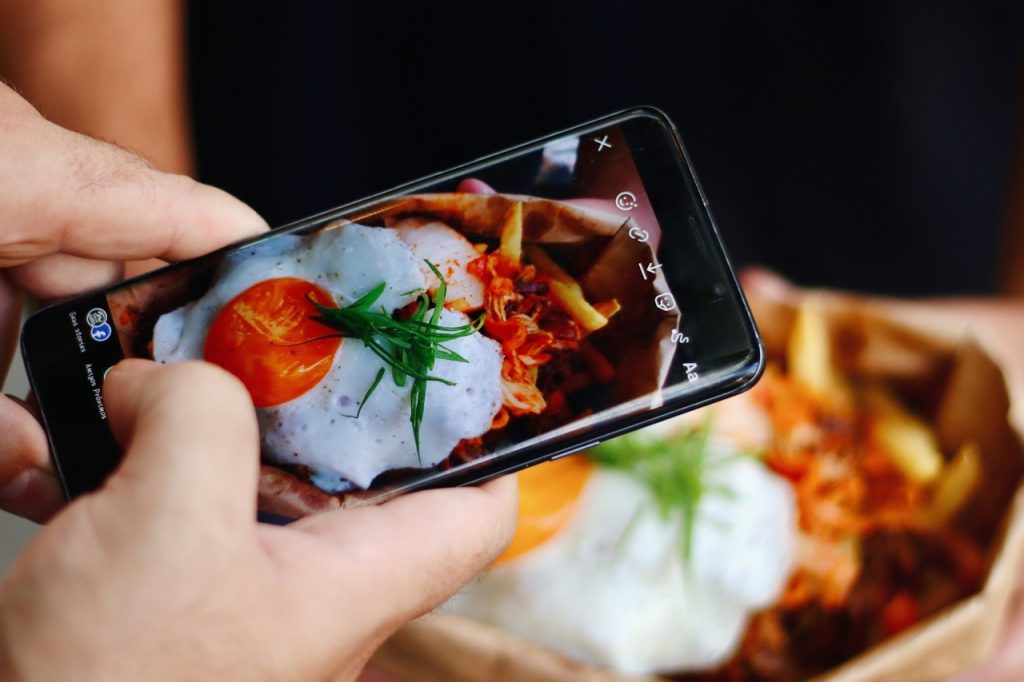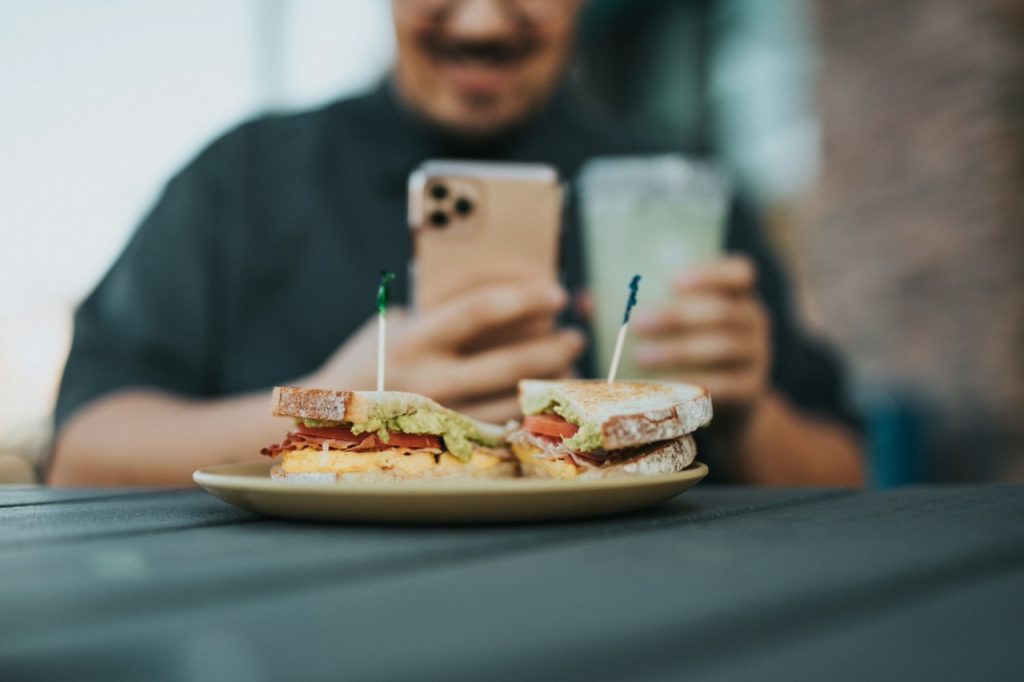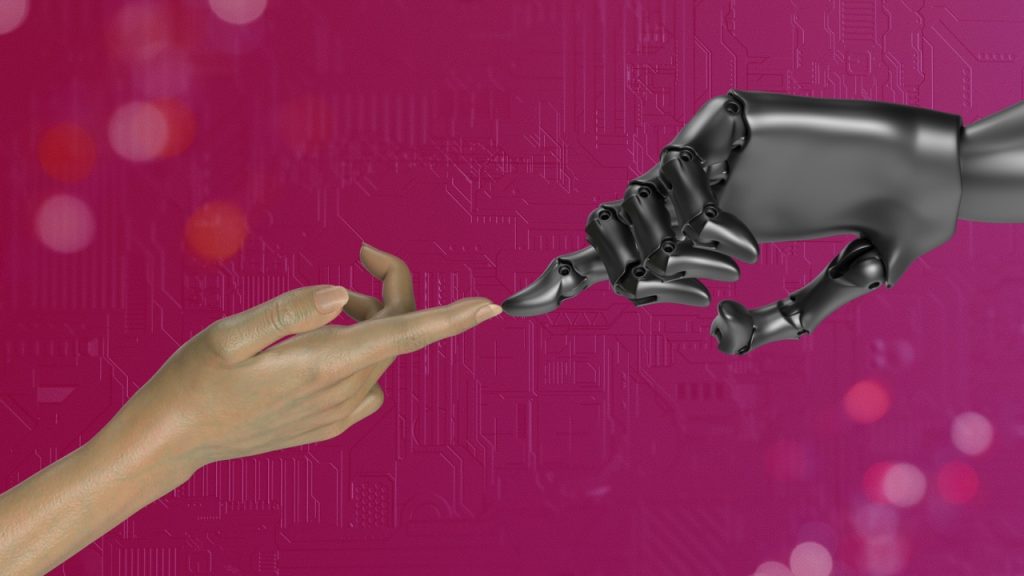1 Introduction — How food-delivery apps have developed in the age of AI
Reimagined from familiarity, the food-delivery landscape has been over these years; and Artificial Intelligence, the quiet driver, is squarely in the center of that revolution. Order screens that used to be plain static restaurant menus are now, right before our eyes, the nervous systems that search for hunger, personalize to a particular set of taste buds, and navigate couriers through traffic in real time. The rise of food delivery app development services has enabled companies to embed AI personalization, predictive menus, and retention AI into the very core of user experiences, dramatically changing what people expect from their favorite apps.
Where did this sort of limit originate? Draw the line and four markers materialize, each one paired with new shots of AI:
- The earliest online menus. Spartan websites—stiff dish cards, fixed prices. Click, pay, wait: the dance was mechanistically pure.
- Analytics enters the room. Data builds up, yes, but its brawn is still under-leveraged; platforms only track best-sellers and rush hours.
- Machine learning steps in. Preferences are now followed, menus recreate themselves, routes shave minutes—logistics and personalisation both learning tricks.
- A true AI shake-out. Chatbots converse back, recommendation engines make mood guesses, demand forecasts shift in real time. Engagement goes up; wait times tank.

To tech companies, the “smart app” is no longer wishful thinking jargon but the hallmark of a successful business model. Some trends, we at Celadonsoft cannot help but notice, are pushing the vector along:
| Development stage | What indicates it | What turns upside down in user experience |
| Static menu | Option is fixed, nothing personalized to | Repetitive offers, much searching |
| Data analytics | Order save statistics | Some proposals emerge, accuracy is hit-or-miss |
| Machine learning | Menus and paths self-adjust | Quick options that suit the tastes, drop-offs are prompt |
| Interactive AI | Robots chat, algorithms predict | Service is seamless, even addictive |
And so begins the new era—apps no longer simply react to a customer but rather choreograph the experience, drawing user after user in with every interaction. AI has dropped the “add-on feature” facade and is now the backbone of tomorrow-food delivery.
In the pages ahead, we’ll tear into the AI functions doing that heavy lifting, watching them transform not just checkout flows but the very conversation between human and screen. In a battlefield this crowded, the true edge belongs to whoever blends tech and insight best. For anyone looking to compete, embracing food delivery app development services that leverage AI personalization, predictive menus, and retention AI is not optional—it’s essential.
2. Personalized Recommendations: The Height of Curation for Everyone
A sticky, addictive service—how is it unique from another delivery destination? That’s the difference, in current competition, personalization. In Celadonsoft, that’s evident: the era of AI has brought analysis to an art, crafting not only user profiles but meal experiences adapting by mood, hour, or shade of last week’s ratings.
So how does it work? Pull back the curtain and a few unexpected levers come into sight—each one enabling recommendations to remember, not just on screen:
- Behaviors and Tastes: Patterns Traced, Habits Shattered.
Each click of the button, each pause and scroll—are captured by algorithms both as what you have chosen, and what you have discarded. Of the discarded points, increasingly more specific, more sophisticated recommendations are built; the noisier the data, the more sophisticated the prediction. - Learning, Contextual and Perpetual.
Season and timing, where you are, and even whether it’s raining—these are not as lucky accidents as substance in themselves. Suggestions, when they spring up of themselves, will frequently have a ring so right that they appear to have foreknown the hunger in advance. - Prediction and Correction, Ad Infinitum.
Never edited, the system—that which handled you last Friday is quietly modified by Tuesday. That which you reject, that which you accept—each ripple alters the model behind your back, shifting constantly for your own sweet spot. - Interest Retention through Surprising Content.
Tire, impatient, crowds will, if same old, same old grub comes along. But present an unfamiliar combination—a tried and true mixed with an interloper, a stalwart vexed out with something kooky—and interest becomes the guest, opting for excitement over tedium.
Why, then, for engineers and developers out of sight, does it matter? Because, as always, in sheaves:
- It is spent more. Dwell time is where the app appears to be waiting for your mind, and spending more time lets a deeper order reveal itself.
- Audience drift is postponed. Customers flip back to what feels like a personal recommendation rather than the generic in favor of a service that remembers.
- Conversion? It flies. Fewer menu dead ends and more purposeful nudges—users click what fits, not what’s available.
Bug tracker - Campaigns hone. The clearer the clue in the data, the less ad waste spend—accuracy trumps shotgun.
The real magic of AI-powered suggestions? It isn’t in the cold logic. It’s that subtle sense you’re being read—not just as a number, but as someone with quirks, moods, patterns all your own. At Celadonsoft, we’re certain: this deep, sometimes uncanny tailoring is what keeps loyalty alive and customers returning, even as competition tightens its grip.
Embed AI that eats, categorizes, and twirls about each data point—coders aren’t releasing another food ordering application. They are building a reason to turn it on, and again and again, with expectations crafted and redrafted every time. With advanced food delivery app development services, this kind of AI personalization powers predictive menus and retention AI strategies that help platforms stand out.

3. Interactive Chatbots: Your Culinary Universe Personal Assistant
Tap-by-tap similarity of food ordering apps lost novelty a long time ago. Now, with AI in the lead, chatbots are not just support tools; they become complete guides—reading moods, tastes, and every whim a hungry client can possibly have.
Let us flip the traditional on its head—what do these interactive chatbots do, exactly?
- Adjust and respond in real-time.
Scripts? No more. The bot hears, adjusts, in a manner reflecting a real-time conversation because it picks up your language and modifies its answers—so what appears to be a human exchange is nothing but code lines taking in your style. - Real-time suggestions.
Order history, massive food database, daily menu variations—chatbot takes care of it all, making pairing recommendations, deal suggestions, or chiming in with a smart substitute when your go-to order is out of alignment. - Cleaning up difficult orders.
Imagine needing to order a build-your-own pizza—need to stay away from allergens, need to keep calories in check, need it at a specific time. The chatbot doesn’t flinch, interpreting each nuance as the need for human intervention vanishes. - Guiding you through each step.
From the moment you enter the app to that ping that announces the delivery of your grub to the door, the bot operates, reassures, eliminates doubt, and simplifies the process from start to finish.
Most importantly, Celadonsoft believes, is that engagement is about speaking the user’s own language—making chatbots not just time-savers, but friends, forging a bond that elevates a straightforward order into a little adventure of taste.
4. Demand Forecasting: Smart Moves, Faster Delivery
Balanced tightly, the food delivery game depends on wrangling resources to the minute. Here, AI’s role flips from helper to strategist—spotting issues before they erupt, planning for what’s next.
Why does AI forecasting turn the business on its head?
- Multi-dimensional data analysis.
Order history, weather, what’s happening in town, even time of day, all get factored in so algorithms can predict spikes in workload with a spooky accuracy. - Workforce, optimized.
When are you going to need more hands? Fewer? Spiking predictions ensures that you’ll never have to scramble to find couriers, or have too many sitting around. - Reduced wait times.
The nearer the forecast, the closer together orders are bunched in the zone, so drops happen faster and customers smile more. - Dynamic target-based pricing and promotions.
It’s not only couriers that receive a boost; downtime summons promotions that are timely, and thereby the system responds to tease demand when it would otherwise lag.
Celadonsoft complements those smart learning algorithms with nimble APIs, so clients don’t merely observe but control their own forecasts in real-time. Efficiency increases, and those all-important KPIs—faster drops, fewer abandoned orders, increased sales—rise along with it.
So, AI-powered forecasting? Not just for behemoths anymore. Anyone serious about optimizing food delivery—and staying afloat in a consolidated market—urgently needs these tools, or gets left behind.
5. Gamification of the Order Process: AI as the Driver of an Enjoyable Experience
Not only winning that first purchase, but turning every order into a wee quest—that’s the challenge, now that user attention is the treasure each delivery app seeks. Where gamification, powered by AI, enters the picture. Celadonsoft’s bet? The actual boost in engagement and loyalty occurs when you combine smart interactivity with artificial intelligence.
Let’s turn the mechanics around and observe how “game” thinking—and AI—make the whole delivery process enticing:
- Personal Challenges and Achievements, Delivered on an Individual Basis.
Frequency of orders, preferred foods, busy hours—AI devours everything, and vomits out customized quests. “Consume three Italian meals this week,” or, “Order five lunches consecutively”—complete one, and receive rewards, discounts, or points to brag about. Repeat orders are now no longer a habit, but a string of triumphs. - Leaderboards and Competition—Community, not Just Customers.
The app, operated by AI, ranks users by interest, activity rank, and encourages friendly competition. Your co-workers and friends? Now they are competitors, and the desire to climb the leaderboard keeps you coming back time and time again. - Mini-Games and Quizzes—Fun, but Always On-Brand.
Had enough of waiting for pizza delivery? Food-related trivia or puzzle, chosen by AI to your interests, appears. Reply correctly, and in comes a secret offer or a short discount. The drudgery vanishes, and the app’s as much game as tool. - Feedback and Dynamic Adjustments—Game Loops That Change.
Which missions test your mettle? Which ones do you steer clear of doing? AI watches, learns, and re-mixes missions on the fly, adjusting the relative reward and difficulty so you’re always pushed, but never drained.
Why would you ever leave it to AI? Gamification that’s set-it-and-forget-it gets moldy quick—users detect artificial patterns and lose enthusiasm. But artificial intelligence can:
- Learn to each mood and habit shift your audience throws at it.
- Spin off new games and rewards without developer hand-holding.
- Add machine learning to the mix, so next week’s “can’t-resist” nudge is calculated before you’ve even realized you’re bored.
Celadonsoft’s delivery tech playbook always puts AI at the center—making the transaction a pleasure, not a chore. When purchasing food is a mini-celebration, users return not because they must, but because they want to.

So, what does AI-powered gamification actually do, then?
- Orders go up—users play more, order more.
- Users are retained, navigating the app’s universe.
- Emotional attachment grows, user to brand.
- New engagement opportunities are unlocked—encouraging, engaging, and entertaining users even more each time.
That, finally, is how an ordering app goes beyond functionality—lively, engaging, a product you’ll look forward to using every single day. Celadonsoft? Still searching, still striving, still integrating AI and gamification in order to squeeze every last bit of that potential. The combination of food delivery app development services and retention AI strategies truly sets a platform apart.
6. Conclusion
And so, let us summarize the most important areas where AI is already paving the way for the industry’s future:
- Deep Personalization:
AI is not skin-deep statistics. It reads behavior patterns, adjusts for context, tracks seasonality—even detects user mood. The result? Menus and suggestions that don’t just suit taste but anticipate it. - Automation and Smart Process Optimization:
From resource planning to demand forecasting, AI returns the operational efficiency and user interface on track. Less lag, quicker delivery time, and, ultimately, more satisfied consumers are the byproducts. - Interactivity and Engagement:
Chatbots, gamification, and notification-based personalization—these everything turns the industry from passive watching to active engagement. Ordering food is no longer transactional; it is adaptive user experience now. - Scalability and Resilience:
Artificial intelligence provides businesses with the agility to react to a changing marketplace—a new trend, a sudden shift in demand, or an unexpected competitor. That’s how you win and reduce your risk simultaneously.
It’s worth keeping in mind: technology isn’t magic in and of itself. Where the magic sauce enters is where AI can be applied to your business model and cultural DNA of your product. For Celadonsoft, what we do is a marriage of innovation and deep industry expertise—so we build solutions that don’t just solve problems, but instill users.
The future of food ordering is larger than a technology issue. It’s a chance to rethink the entire consumption experience. Here, AI isn’t solely the catalyst for automation—it’s the catalyst for innovation and emotion, returning consumers time and again.
At Celadonsoft, we think the platform upon which that tomorrow is being built here today is: flexible, intelligent, people-driven, and robust enough to expand. And what do we do? Stay on the cutting edge of this wave, designing and delivering AI-based solutions that not only address the demands of today, but set standards for tomorrow.
Briefly, the key points:
- AI makes deep personalization and predictive analytics possible.
- It optimizes operational efficiency and service excellence.
- AI provides emotionally engaging, interactive user experiences.
- It ensures business process scalability and high resilience in the volatile market.
It’s where artificial intelligence is the inseparable partner of the businesses and consumers, ushering new avenues to food delivery apps, including advances in food delivery app development services, AI personalization, predictive menus, smart combos, and retention AI.



